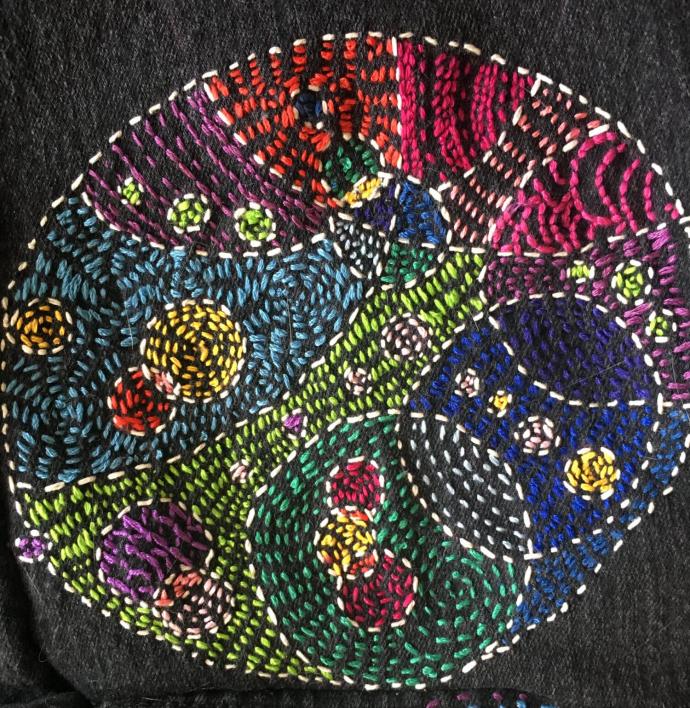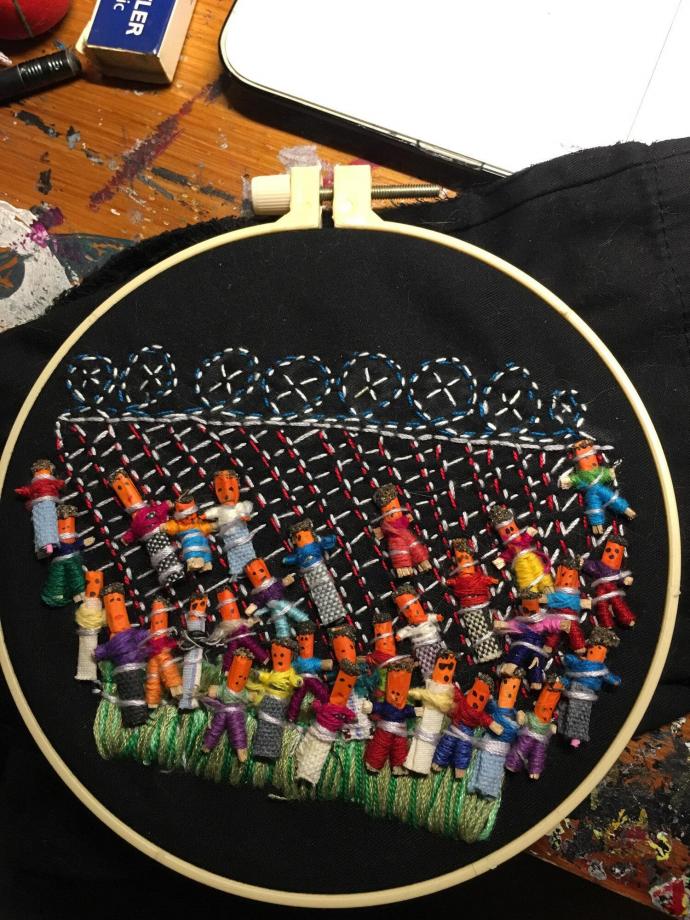NJIT's Vanessa Velez Awarded for Quarantine-Inspired Folk Artwork

NJIT Department of Humanities staff member Vanessa Velez has shown that not only is art her true calling, but it's a potent form of therapy, especially during the COVID-19 pandemic. Recently, Velez’s quarantine-inspired artwork was awarded at the “nation’s largest annual celebration of handmade craft,” American Craft Week, observed virtually this year. The event annually features an artist contest that attracts submissions in the folk tradition from around the nation — spanning paintings and embroidery to artisan jewelry and furniture.
Velez, who is currently assistant to the Humanities Department chair at NJIT, joined 19 other artists awarded from this year’s contest, which centered around the theme, “Art Therapy in the Time of COVID-19.” Velez first caught wind of the contest this summer from NJIT Distinguished Professor of Humanities Burt Kimmelman.
“I honestly did not think I would have drawn any attention to myself with this work … When we were first put on stay-at-home orders, I found myself experiencing a lot of nervous energy like many people and I started doing [my artwork] more out of necessity to preserve my own mental health during this uncertain time,” said Velez. “What I’ve learned from the other artists picked for this award is that folk crafts have become dominant in this specific moment in history. People, whether they are artists or new crafters, are working with what they have available around them to relieve their own visceral tensions and to create pieces that are distinctly reflective of this point in history, when we have no other choice but to spend more time having internal conversations with ourselves.”
As she says, Velez wasn’t alone in finding inspiration and catharsis producing art for American Craft Week judges this year during her quarantine. Perhaps unsurprisingly — given the unprecedented period of isolation, anxiety and reflection — the event attracted its most submissions of any year since its inception, according to its organization's website. However, Velez was recognized among the many for her original pieces inspired by Sashiko, a form of decorative reinforcement stitching (or functional embroidery) originating from Edo-era (1600s) Japan.
"Cells” — Vanessa Velez
"Land of the Free” — Vanessa Velez
“With Sashiko, it is different in that you create a single running stitch. You have a lot of wiggle room to create freestyle designs, however, there’s also an angle of geometry to it,” said Velez. “With this project, I decided to use leftover clothes and thread I had readily available to create something beautiful.”
Velez says she began practicing the discipline only recently, using recycled denim and other fabrics she had from old clothes. When it came to navigating the long periods of solitude that come with months of stay-at-home orders this past spring, she said she gravitated to the artform. As part of her submission to the competition, she had to also present how creating her Sashiko pieces served as art therapy for her personally.
“When people feel anxiety, they partake in the act of ‘stimming’ behavior, or repetitive tactile behaviors like hair-twirling or even playing repetitive games on your phone,” said Velez. “What I like about this form of embroidery is the repetitive nature of it. It feels almost like meditation. Concentrating on the small stitches, the act of embroidering provided me with a sense of focus, allowing me to center my thoughts on something aside from the troubling news coming in from the outside world.”
Back at NJIT, Velez will continue her role in the Humanities Department while pursuing artwork that covers an ever-increasing range of mediums, including portrait work, sculpting and beyond. She may even look for new ways to encourage more sustainable art to be made on NJIT’s campus.
“Recycling materials to create art is something that I will continue to work on the create new and informative artwork … When it comes to NJIT, I would love to help the community focus on recognizing the potential of the materials that we have readily available, rather than crafting new materials that add to our already existing problem of surplus and waste that overwhelm our environment,” said Velez.
“Anything we create has intrinsic meaning, even if we don’t recognize it at first. I think that one of the positive outcomes of this pandemic is that we have more time to devote to getting to know ourselves and to understand what we personally need to persevere when life becomes unpredictable.”



